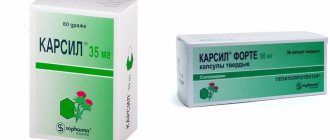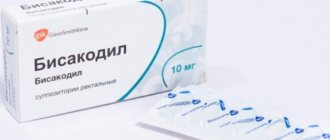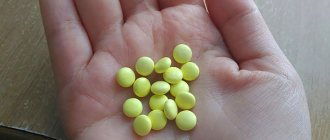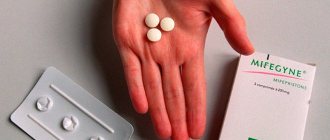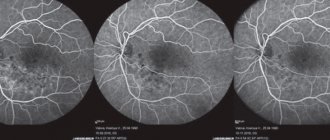Captopril
| Clinical data | |
| Pronunciation | /ˈkæptəprɪl/ |
| Trade names | Kapoten et al. |
| AHFS/Drugs.com | Monograph |
| MedlinePlus | a682823 |
| Pregnancy category |
|
| Routes administration | Orally |
| ATC code |
|
| Legal status | |
| Legal status |
|
| Pharmacokinetic data | |
| Bioavailability | 70–75% |
| Metabolism | Liver |
| Elimination of half-life | 1.9 hours |
| Excretion | Bud |
| Identifiers | |
IUPAC name
| |
| Number of CAS |
|
| PubChem C.I.D. |
|
| IUPHAR/BPS |
|
| DrugBank |
|
| ChemSpider |
|
| UNII |
|
| KEGG |
|
| CHEBY |
|
| CHAMBL |
|
| Ligand PDB |
|
| CompTox Control Panel (EPA) |
|
| ECHA InfoCard | 100.057.806 |
| Chemical and physical data | |
| Formula | C9H15NO3S |
| Molar mass | 217.28 g mol−1 |
| 3D model (JSmol) |
|
Smiles
| |
InCHI
| |
| (check) | |
Captopril
, sold under the brand name
Capoten
among other things, is an angiotensin-converting enzyme (ACE) inhibitor used to treat hypertension and some types of chronic heart failure.
It was patented in 1976 and approved for medical use in 1980.[1]
Medical use
Drosophila
ACE complexed with captopril (purple), PDB entry 2x8z[2]
The main uses of captopril are based on its vasodilation and inhibition of certain renal functions. These benefits are most pronounced in: 1) Hypertension2) Cardiac diseases such as chronic heart failure and post-myocardial infarction3) Preservation of kidney function in diabetic nephropathy.
In addition, it has shown mood-enhancing properties in some patients. This is consistent with the observation that animal screening models indicate putative antidepressant activity for this compound, although one study was negative. No formal clinical trials have been reported in patients with depression.[3]
It has also been researched for use in the treatment of cancer.[4] Stereoisomers of captopril have also been reported to inhibit some metallo-β-lactamases.[5]
At what pressure will the drug be effective?
Captopril for blood pressure has an effect on ACE (angiotensin-converting enzyme), which affects the tone of blood vessels, narrowing them and causing an increase in blood pressure. As a result, the capillary walls maintain normal tone, do not contract and do not slow down blood circulation. With constant use of the medicine, you can reduce blood pressure to normal levels and maintain it within acceptable limits.
Captopril quickly reduces blood pressure, improving blood supply to the heart, relaxing its capillaries and reducing the load on the myocardium. At the same time, the heart muscle retains its full ability to pump a sufficient amount of blood into the circulatory system. Patients who take Captopril after a heart attack are able to withstand physical stress and emotional stress because their heart muscle becomes more resilient.
It is important to reduce blood pressure gradually
At what pressure should you take the tablets so that they have the maximum therapeutic effect? Captopril is usually prescribed to patients diagnosed with the first and second stages of hypertension, when blood pressure levels rise to 179/109. This condition does not require additional therapy and can be easily treated with the prescribed dose of tablets. Severe hypertension, in which the pressure rises above 180/110, requires the use of the drug together with diuretics, since in such situations Captopril does not reduce the pressure to normal levels alone.
Side effects
Main article: ACE inhibitor § Side effects
Side effects of captopril include cough due to increased plasma bradykinin levels, angioedema, agranulocytosis, proteinuria, hyperkalemia, taste changes, teratogenicity, postural hypotension, acute renal failure, and leukopenia.[6]With the exception of postural hypotension, which occurs from -Due to the short and rapid mode of action of captopril, most of the side effects mentioned are common to all ACE inhibitors. Among them, cough is the most common side effect. Hyperkalemia may occur, especially when used with other drugs that increase blood potassium levels, such as potassium-sparing diuretics. Other side effects:
- Itching
- Headache
- Tachycardia
- Chest pain
- Heartbeat
- Weakness
The adverse drug reaction (ADR) profile of captopril is similar to other ACE inhibitors, with cough being the most common adverse reaction.[7] However, captopril is also often associated with rash and taste disturbances (metallic or loss of taste), which are attributed to the unique thiol moiety.[8]
Captopril also has a relatively poor pharmacokinetic profile. The short half-life requires dosing two or three times daily, which may reduce compliance.
Contraindications for use
In some cases, taking the drug is excluded:
- pregnancy period (2nd and 3rd trimester);
- GW period (entirely);
- angioedema;
- hypersensitivity, individual intolerance to captopril or excipients;
- simultaneous use with the drug "Aliskiren" (should be excluded by people suffering from diabetes or having renal failure).
Story
At the end of the 1960s. John Vane of the Royal College of Surgeons of England worked on the mechanisms by which the body regulates blood pressure.[12] He was joined by Sergio Henrique Ferreira from Brazil, who studied the venom of the Brazilian jararaca viper ( Bothrops jararaca)
, and brought a sample of viper venom. Wayne's team found that one of the venom's peptides selectively inhibited the action of angiotensin-converting enzyme (ACE), which was thought to be involved in the regulation of blood pressure; snake venom works by greatly reducing blood pressure. In the 1970s, ACE was discovered to increase blood pressure by controlling the release of water and salts from the kidneys.
Captopril, an analogue of snake venom ACE-inhibiting peptide, was first synthesized in 1975 by three researchers from the American pharmaceutical company ER Squibb & Sons Pharmaceuticals (now Bristol-Myers Squibb): Miguel Ondetti, Bernard Rubin and David Cushman. Squibb applied for US patent protection for the drug in February 1976, US Patent 4,046,889 was issued in September 1977, and captopril was approved for medical use in 1980.[1] It was the first ACE inhibitor to be developed and was considered a breakthrough due to both its mechanism of action and the development process.[13][14] In the 1980s, Wayne received the Nobel Prize and was knighted for his work, and Ferreira received the award. National Order of Scientific Merit from Brazil.
The development of captopril was one of the first successes of the revolutionary concept of ligand-based drug design. The renin-angiotensin-aldosterone system was widely studied in the mid-20th century, and this system represented several suitable targets in the development of new treatments for hypertension. The first two targets that were attempted were renin and ACE. Captopril was the culmination of the Squibb laboratories' efforts to develop an ACE inhibitor.
Ondetti, Cushman and his colleagues built on work done in the 1960s by a group of researchers led by John Vane at the Royal College of Surgeons of England. The first breakthrough was made by Kevin K.F. Ng[15][16][17] in 1967 when he discovered that the conversion of angiotensin I to angiotensin II took place in the pulmonary circulation instead of the plasma. In contrast, Sergio Ferreira[18] discovered bradykinin disappeared during its passage through the pulmonary circulation. The conversion of angiotensin I to angiotensin II and the inactivation of bradykinin were thought to be mediated by the same enzyme.
In 1970, using bradykinin enhancing factor (BPF) provided by Sergio Ferreira,[19] Ng and Wayne discovered that the conversion of angiotensin I to angiotensin II is inhibited during its passage through the pulmonary circulation. BPF was later discovered to be a peptide in lancet viper venom. (Botrops Hararaka)
, which was a "assembled product inhibitor" of the converting enzyme. Captopril was developed from this peptide after it was discovered through QSAR-based modification that the terminal sulfhydryl moiety of the peptide provides high ACE inhibition potency.[20]
Captopril received FDA approval on April 6, 1981. The drug became generic in the United States in February 1996 when Bristol-Myers Squibb's market exclusivity expired.
How quickly does the drug work?
How long does it take for Captopril to work, patients with regular surges in blood pressure ask. The drug is characterized by good absorption into the blood serum, and the peak of action begins 15–60 minutes after administration. If a patient has just eaten and then taken a Captopril tablet, this can reduce the effectiveness of the drug by up to 40%. Therefore, doctors recommend taking the medication 1.5 hours after eating.
Also, many hypertensive patients are interested in whether to drink Captopril with water, or would it be more correct to put it under the tongue? There have been no special studies on this matter, so it is impossible to say that one of these methods of using tablets is correct and the other is not. You should try both options, after taking it, monitoring your blood pressure level using a tonometer and focusing on your own sensations. For some patients, resorption of Captopril under the tongue brings a greater effect than oral administration, while for others it is more common to take tablets with water.
Chemical synthesis
The chemical synthesis of captopril by treating L-proline with (2S)-3-acetylthio-2-methylpropanoyl chloride under basic conditions (NaOH) followed by aminolysis of the acetyl protecting group to unmask the free drug thiol is depicted in the figure on the right.[21]
| Synthesis of captopril 1 | Synthesis of captopril 2 |
| Synthesis of captopril Shimazaki, Watanabe, et al. |
|
Procedure 2 is taken from US4105776. See Examples 28, 29a and 36.
special instructions
Taking the drug during pregnancy is excluded during the 2nd and 3rd trimester and is undesirable at the initial stage. Therefore, on the eve of planning or immediately after pregnancy is detected, you should switch to other medications in consultation with your doctor. During breastfeeding, the use of the product is completely excluded.
During therapy with Captopril, the ability to drive a car, as well as certain types of activities, may decrease. The onset of such effects depends on the dosage and individual characteristics of the body.
Recommendations
- ^ a b
Fisher J, Ganellin CR (2006).
Analog-based drug discovery
. John Wiley and Sons. item 467. ISBN 9783527607495. - Akif M, Georgiadis D, Mahajan A, Immersion V, Sturrock ED, Isaac RE, Acharya KR. (July 2010). "High-resolution crystal structures of the angiotensin-converting enzyme of Drosophila melanogaster in complex with new inhibitors and antihypertensive drugs." Journal of Molecular Biology
.
400
(3):502–17. doi:10.1016/j.jmb.2010.05.024. PMID 20488190. - Murphy D. L., Mitchell P. B., Potter W. Z. "New pharmacological approaches to the treatment of depression." Archived from the original on May 12, 2008.
- Attoub S., Gaben A.M., Al-Salam S., Al-Sultan M.A., John A., Nicholls M.G. and others (September 2008). "Captopril as a potential inhibitor of lung tumor growth and metastasis." Annals of the New York Academy of Sciences
.
1138
(1):65–72. Bibcode:2008NYASA1138 ... 65A. Doi:10.1196/chronicle.1414.011. PMID 18837885. S2CID 24210204. - Brehm J, Van Berkel SS, Zollman D, Lee SY, Gileady O, McHugh PJ. and others (January 2021). "Structural basis of metallo-β-lactamase inhibition by stereoisomers of captopril". Antimicrobials and chemotherapy
.
60
(1): 142–50. Doi:10.1128/AAC.01335-15. PMC 4704194. PMID 26482303. - "Captopril (ACE inhibitor): side effects." Lifehugger. 2008-07-09. Archived from the original on 2009-08-14. Retrieved 2009-05-02.
- Rossi S., ed. (2006). Australian Medicines Guide
. Adelaide: Australian Medicines Guide. - Atkinson AB, Robertson JI (October 1979). "Captopril in the treatment of clinical hypertension and heart failure." Lancet
.
2
(8147):836–9. Doi:10.1016/S0140-6736 (79) 92186-X. PMID 90928. S2CID 32209360. - Nelson, L., Howland, M. A., Levin, N. A., Smith, S. W., Goldfrank, R., Hoffman, R. S., Flomenbaum, N. (2019). Toxicological conditions of Goldfrank
. New York: McGraw-Hill Education. item 953. ISBN 978-1-259-85961-8. - Mailer's Side Effects of Analgesics and Anti-Inflammatory Drugs, Jeffrey K. Aronson, page 120.
- Ajayi A.A., Campbell B.K., Rubin P.K., Reed J.L. (November 1985). "The effect of naloxone on the action of captopril." Clinical Pharmacology and Therapeutics
.
38
(5):560–5. doi:10.1038/clpt.1985.224. PMID 2996820. S2CID 35799800. - Crow, James Mitchell. "Medicines for a bite: the healing properties of poisons." New scientist
. Received 2020-07-30. - Brian J (2009). "From Snake Venom to ACE Inhibitor - the Discovery and Distribution of Captopril." Pharmaceutical Journal
. Retrieved 2015-01-08. - Blankley CJ (September 1985). "Chronicles of Drug Discovery, vol. 2". Journal of Pharmaceutical Sciences
.
74
(9): 1029–30. Doi:10.1002/jps.2600740942. - Ng KK, Wayne Jr (November 1967). "Conversion of angiotensin I to angiotensin II". Nature
.
216
(5117):762–6. Bibcode:1967Natura.216..762N. Doi:10.1038/216762a0. PMID 4294626. S2CID 4289093. - Ng KK, Wayne Jr (April 1968). "The fate of angiotensin I in the circulation". Nature
.
218
(5137): 144–50. Bibcode:1968Natura.218..144N. Doi:10.1038/218144a0. PMID 4296306. S2CID 4174541. - Ng KK, Vane JR (March 1970). "Some properties of angiotensin-converting enzyme in the lungs in vivo". Nature
.
225
(5238):1142–4. Bibcode:1970Natura.225.1142N. Doi:10.1038/2251142b0. PMID 4313869. S2CID 4200012. - Ferreira SH, Wayne Jr (June 1967). "Disappearance of bradykinin and eledoisin in the circulation and vascular bed of the cat." British Journal of Pharmacology and Chemotherapy
.
30
(2): 417–24. Doi:10.1111/j.1476-5381.1967.tb02148.x. PMC 1557274. PMID 6036419. - Smith CG, Vane JR (May 2003). "Discovery of captopril". FASEB Magazine
.
17
(8):788–9. Doi:10.1096/fj.03-0093life. PMID 12724335. S2CID 45232683. - Patlak M (March 2004). "From Viper Venom to Drug Development: Treatment of Hypertension." FASEB Magazine
.
18
(3): 421. doi:10.1096/fj.03-1398bkt. PMID 15003987. S2CID 1045315. - Shimazaki, M., Hasegawa, J., Kan, K., Nomura, K., Nose, Y., Kondo, H., Ohashi, T., Watanabe, K. (1982). "Synthesis of captopril from optically active .BETA.-hydroxy acid". Chem.
Pharm. Bull .
30
(9):3139–3146. doi:10.1248/cpb.30.3139. - M. A. Ondetti, D. W. Cushman, DE 2703828; eidem US Patent 4,046,889 and US Patent 4,105,776 (1977, 1977, 1978, all to Squibb).
- Ondetti M.A., Rubin B., Cushman D.V. (April 1977). "Design of specific angiotensin-converting enzyme inhibitors: a new class of orally active antihypertensive agents." The science
.
196
(4288):441–4. Bibcode:1977Science...196..441O. doi:10.1126/science.191908. PMID 191908. - Cushman D. W., Chung H. S., Szabo E. F., Ondetti M. A. (December 1977). “Development of powerful competitive inhibitors of angiotensin-converting enzyme. Carboxyalkanoyl and mercaptoalkanoylamino acids." Biochemistry
.
16
(25): 5484–91. Doi:10.1021/bi00644a014. PMID 200262. - Nam D.H., Lee S.S., Ryu D.D. (December 1984). "Improved synthesis of captopril". Journal of Pharmaceutical Sciences
.
73
(12):1843–4. Doi:10.1002/jps.2600731251. PMID 6396401. - Vallerand AH, Sanoski California, Deglin JH. (06/05/2014). Davis's Drug Guide for Nurses
(Fourteenth ed.). Philadelphia. ISBN 978-0-8036-4085-6. OCLC 881473728. - Brown NJ, Vaughan DE (April 1998). "Angiotensin-converting enzyme inhibitors." Circulation
.
97
(14): 1411–20. Doi:10.1161/01.cir.97.14.1411. PMID 9577953. - Duchin K.L., McKinstry D.N., Cohen A.I., Migdalof B.H. (April 1988). "Pharmacokinetics of captopril in healthy subjects and patients with cardiovascular disease." Clinical pharmacokinetics.
.
14
(4): 241–59. Doi:10.2165/00003088-198814040-00002. PMID 3292102. S2CID 46614471.
